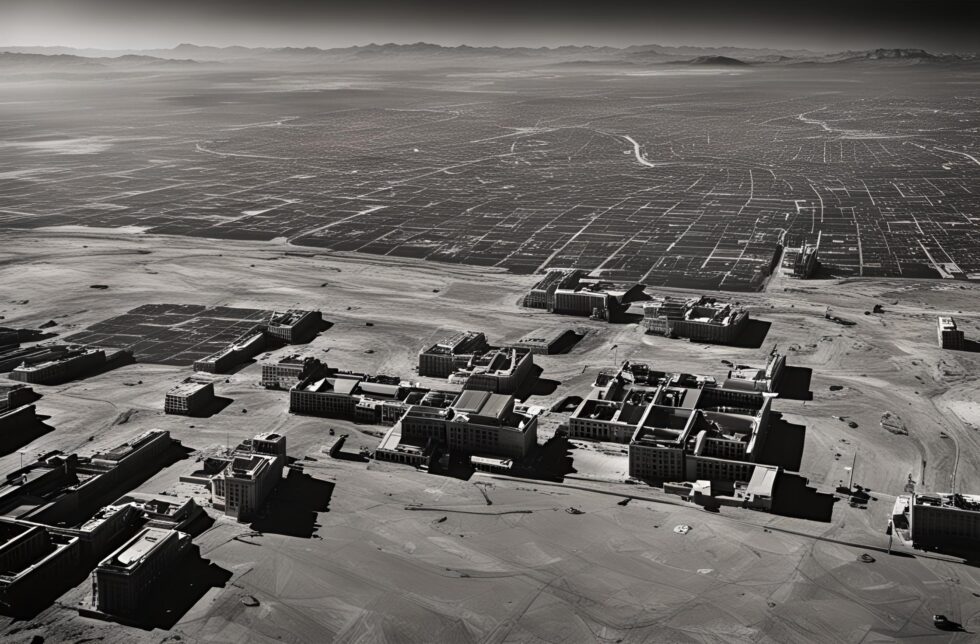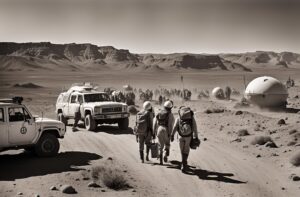
In the year 2075, humanity’s long-held dream had finally come to fruition. Mars, the Red Planet, had been transformed from a barren wasteland into a thriving, habitable world. This monumental endeavor combined the efforts of the world’s greatest minds, the most advanced technology, and the collective will of billions. The process took decades, but the results were nothing short of miraculous.

The first step was to create an atmosphere. Scientists developed massive factories that pumped greenhouse gases into the Martian sky, gradually warming the planet. These factories, known as “terraformers,” were scattered across the surface, their towering chimneys belching out plumes of carbon dioxide and methane. Over time, the temperature began to rise, and the ice caps at the poles started to melt. Water flowed in rivers and lakes for the first time in eons, and the air grew thick enough to support life.
With the atmosphere in place, the next challenge was to introduce plant life. Geneticists engineered hardy, fast-growing plants that could survive in the harsh Martian environment. These plants were seeded across the planet, and soon, patches of green began to spread. Algae and lichens took hold in the newly formed lakes and rivers, while grasses and shrubs sprouted on the plains. As these plants grew, they released oxygen, further enriching the atmosphere and making it more hospitable for human life.
The final piece of the puzzle was the introduction of animal life. Scientists carefully selected species that could thrive in the new Martian ecosystem. Soon, the planet was teeming with life. Insects buzzed through the air, birds soared on the thermals, and small mammals scurried through the underbrush. The transformation was complete: Mars was now a living, breathing world.

The first human settlers arrived soon after. They were a diverse group, hailing from every corner of Earth. They built cities and towns, farms and factories, schools and hospitals. They brought with them the culture and traditions of their home planet, but they also forged a new identity as Martians. They were pioneers, the first generation of a new world.
Life on Mars was not without its challenges. The planet’s gravity was only a third of Earth’s, which took some getting used to. The days were longer, and the nights colder. But the settlers were resourceful and determined. They adapted to their new environment, and over time, they began to thrive.
The success of the Mars terraforming project had a profound impact on humanity. It demonstrated that we were capable of incredible feats, that we could overcome seemingly insurmountable obstacles. It inspired a new era of exploration and innovation. Other planets and moons in the solar system were targeted for terraforming, and soon, humanity had a presence on many worlds.
The transformation of Mars also had a profound impact on human society. The settlers on Mars developed a unique culture, one that was distinct from Earth but still connected to it. They celebrated their achievements and looked to the future with optimism and hope. They saw themselves as the vanguard of a new era, one in which humanity would spread out among the stars.
Back on Earth, the success of the Mars project had a unifying effect. It brought people together, fostering a sense of shared purpose and common destiny. It reminded us that we are all part of the same species, that we share the same planet, and that we are capable of great things when we work together.
As the years passed, the bond between Earth and Mars grew stronger. Trade and communication flourished, and people traveled freely between the two worlds. The Martian cities grew and prospered, becoming centers of culture, science, and industry. New generations were born on Mars, and they looked to the stars with the same sense of wonder and curiosity that had driven their ancestors.
The terraforming of Mars was more than just a scientific achievement; it was a testament to the power of human ingenuity and determination. It showed that we are not bound by the limitations of our home planet, that we can reach out and shape the universe to our will. It was a bold step into the unknown, and it opened up a future of limitless possibilities.




